What Does Verb To Be Mean As stated before, the first person singular form of a regular verb form or to-be verb form is often the same as the simplest form of the verb. However, that's not always true with irregular verbs and words in the to-be form, such as was or were. Look below to continue learning about the other subject forms and examples of their verb conjugation English use. The plural vosotros is always the same as the infinitive, but with a final -d instead of an -r in the formal, written form; the informal spoken form is the same as the infinitive. The singular vos drops the -r of the infinitive, requiring a written accent to indicate the stress. The final type of change, with uir, will happen in the same verb forms as the stem changes mentioned earlier - yo, tú, él/ella/usted, and ellos/ellas/ustedes.
Just as with the stem changes, you do not change the spelling for uir verbs in the nosotros or vosotros forms. You can see this in the conjugation of the verb contribuir. The imperative mood has three specific forms, corresponding to the pronouns tú, vos, and vosotros (tú and vos are used in different regional dialects; vosotros only in Spain). These forms are used only in positive expressions, not negative ones.
The subjunctive supplements the imperative in all other cases (negative expressions and the conjugations corresponding to the pronouns nosotros, él/ella, usted, ellos/ellas, and ustedes). If Spanish is the first foreign language you have studied, the term "conjugation" may be new to you. Conjugation is very important in Spanish because verbs change their form to match the subject of the sentence. For most verbs, there are six different forms you could use depending on the subject the verb is paired with! Since subject pronouns are sometimes optional, the form of the verb sometimes tells who or what you are talking about - so it is especially important to conjugate your verbs correctly. You already know quite a lot about how to get verb forms to agree with the subject in a sentence.
If you're learning English as a second language, you may wonder about imperfect verb conjugation. Note that other words that end in y will have different endings, such as pray becoming prayed, or lay becoming laid. That's because many irregular forms have their own unique verb conjugation patterns. These are irregular verbs which have different English verb conjugations, such as these examples. Conjugation gives your reader or your listener important background information.
In the examples above, you saw how to use words to describe the number of people or things someone's talking about in verb conjugation English subject placement. You also saw examples of how you can tell when an action will occur in verb conjugation English tenses. Additionally, verb conjugation also explains how much of an action has taken place, the gender of the people that receive an action, and the mood of an overall sentence.
In addition to the six different person categories, there are also twelve different tenses that each call for a different conjugation of verbs based on when an action or state of being is occurring. Look at each tense and note how the suffixes change a regular verb form during standard conjugation. For this example, we'll use first person singular form, I. As you can see, among all the subject matches with all the regular verb conjugations the only change occurs with the third person singular form. This is the standard pattern with regular verb forms like to work, making this English verb conjugation easy to remember. Let's look at the regular verb to work as an example.
During verb conjugations it will change from the infinitive form depending on the grammatical subject. This means that you add different suffixes to the infinitive form depending on who you're referring to in a sentence. Every language has its rules and Spanish makes no exception . There's nothing scary about a little grammar once in a while. The same as in English, the Spanish language has regular verbs that follow certain rules and irregular verbs that usually go wild and need to be learned by heart. Today, we are studying a few eloquent examples from both sides.
Both English and Spanish have a lot of irregular verbs which simply need to be memorized, but learning the rule for regular verbs makes conjugation much easier. For nosotros and vosotros, you will use the the same letters in the stem that are in the infinitive form. Each different subject has a regular conjugation for each of the three infinitive endings. These verbs follow their own sets of rules and are called irregular verbs.
In Spanish grammar, continuous tenses are not formally recognized as in English. However, one can also say sigo leyendo ("I am still reading"), voy leyendo ("I am slowly but surely reading"), ando leyendo ("I am going around reading"), and others. Now let's say that same sentence using indirect object pronouns. In English, it would be "I bought pizza for him." In Spanish, that would be Le compré pizza. Like the direct object pronouns, indirect object pronouns come before the verb, too. The sentence "I was dancing" would be replaced with "I danced" in Spanish.
The easiest type of irregular verbs in Spanish are the ones that require stem-changing but keep the regular endings. By the way, the stem of a verb is the result you get when you remove the infinitive suffix (meaning the -ar, -er, or -ir) from the infinitive form. For example, the stems of deber, hablar and vivir are "deb-", "habl-" and "viv-". As you already know, irregular verbs are "rebel" verbs that follow no regular set of rules. Statistically, in Spanish, almost all verbs ending in -ar are regular, almost all verbs ending in -er are irregular and less than half of all verbs ending in -ir are irregular. So let's disentangle this complicated situation of irregular Spanish verbs and look for some patterns to help us learn faster.
The last category includes verbs that have spelling changes to correctly represent the sound of the word. The first two changes, g to j and gu to g, happen for the yo form of the verb in the present indicative. The other change, with uir, happens for all conjugations except nosotros and vosotros. Many Spanish verbs are completely regular, meaning that they follow a specific pattern of conjugation. In this lesson you will learn to conjugate regular -ar, -er, and -ir verbs .
Before you can do that, you must memorize the following subject pronouns. Generally, you need context with these forms just as you do in romance languages, but not always, which is how they are often overlooked as a potential imperfect verb conjugation in English. Again, this action word is the same as the root of the infinitive form that we will change during the conjugation of verbs in other tenses. This will be highlighted later in the guide to reflect tense change in English verb conjugation. You use this form to speak about yourself and someone else in verb conjugation English use to describe you and another person performing the same action in a sentence.
In this case, instead of using the pronoun I, you use we. The essence of verb conjugations are to match the subject with the appropriate verb based on the time period. There are multiple verb conjugations, and each expresses different time periods and are used differently based on context. Which one you use depends on the message you want to share.
These irregular verbs don't follow any predictable rules, so the best thing you can do is memorize and practice them. The future has two main forms in Spanish, the imperfect future and the simple one. The compound future is done with the conjugated ir (which means "to go," but may also mean "will" in this case) plus the infinitive and, sometimes, with a present progressive verb added as well. Notice that the direct object pronoun goes before the verb, though.
In most situations, Spanish has the same sentence structure as English (Subject-Verb-Object). But when it comes to direct object pronouns, it's Subject-Direct Object Pronoun-Verb. Finally, you have third person singular and third person plural in typical verb conjugation English use.
For example, you may hear you all or you guys or even youse . In writing, however, for both singular and plural forms, you use the word you in verb conjugations. Learning verb conjugation expands your speaking ability by letting you describe yourself and others in new ways.
In this lesson, you'll learn how to use the conjugation of verbs to express yourself and others and their actions or state of being. You'll also discover how to tell in speech and writing when an action takes place and understand how to express yourself in different situations. The meaning and syntactic structure of this sentence cannot be derived from the lexical entry of the verb sleep. The meaning of the sentence is that the person involved was sleeping the whole time it took whatever vehicle s/he was travelling in to cross the state of Nebraska. Jackendoff still defends a lexicalist approach for motion sentences in general. Nevertheless, other authors have postulated a constructional account for directed motion.
In fact, the following section will review the most articulate and influential of these proposals, Goldbergs . In particular, the three constructions involving directed motion that Goldberg established will be discussed at length and will be contrasted with lexicalist alternatives. None of these verbs encode motion in their meaning, nevertheless, they turn up in directed motion sentences.
Meander verbs are another class of verbs that also take directional phrases. The directional construction would then determine the overall shape and meaning of this type of sentence. As stated above, deciding whether to use the preterite or the imperfect can present some difficulty for English speakers.
But there are certain topics, words, and key phrases that can help one decide if the verb should be conjugated in the preterite or the imperfect. These expressions co-occur significantly more often with one or the other of the two tenses, corresponding to a completed action or a repetitive action or a continuous action or state in the past. The -g- is present in the present subjunctive of such verbs. These verbs are often irregular in other forms as well. It's important to mention that echar is a regular verb, which means that it follows the most common conjugation pattern in Spanish. Pronouns change depending on where and how they're used in a sentence.
They can change depending on whether you're expressing possession, direction, or using them after prepositional phrases. It's sounds complicated, but it's a lot like English — think of how the personal pronoun "I" changes to "me" or "my" depending on where and how it's used. Each of these different tenses in English verb conjugation describe an action taking place at different times. In standard verb conjugation English use, present events occur right now, like in I or are ongoing. The past events occurred in the past, some of which are ongoing.
You also have the future, which explains that actions will happen in the future, many of which will continue further into the future. You complete the verb conjugation of these tenses by adding an -ed, -ing, and often a linking word. Next you have the second person singular and the second person plural. You use these categories when you refer to the individual or individuals that you are talking or writing to in standard verb conjugation English use.
For now, just learn the forms for recognition purposes. Keep in mind the fact that the first person singular , third person singular (él, ella), and second person formal singular forms use tildes on the final letters of the verb endings. And one little tilde can make all the difference in the world! If you don't know yet how accents work, take a look at our article on Spanish accents and how to master them all. For a list of the most common -ar verbs and their conjugations, click here.
For an example of how an irregular verb can differ, see the conjugation chart for the verb estar below. Infinitive Translation yo form dar to give doy ver to see veo saber to know sé As you can see, each verb has its own unique irregular change in the yo form. The other forms of the verb follow the regular conjugation rules for the infinitive ending of the verb.
Verbs are words for the actions that we do, like run or read, and our states of being. In Spanish, every verbs starts with one basic form called the infinitive which ends in either -ar, -er, or -ir. When you make a sentence using the verb, you conjugate, or change, the infinitive to match the subject of the sentence. This means that verbs in Spanish have different spellings depending on who does the action.
So, the word for ''I think'', pienso, is different from the word for ''you think'', piensas. Sometimes expressions like "today", "this year", and "this week" are used to express the idea these periods are over. For example, in December one might speak of the year in the simple past because we are assuming that all of that year's important events have occurred and one can talk as though it were over. Other expressions—such as "this weekend," if today is Monday—refer to a period which is definitely over; the word "this" just distinguishes it from other weekends. There is a tendency in Spanish to use the perfect even for this type of time reference, even though the preterite is possible and seems more logical. The indicative mood has five simple tenses, each of which has a corresponding perfect form.
In older classifications, the conditional tenses were considered part of an independent conditional mood, but now are grouped with the indicative. Continuous forms are usually not considered part of the verbal paradigm, though they often appear in books addressed to English speakers who are learning Spanish. Modern grammatical studies count only the simple forms as tenses, and the other forms as products of tenses and aspects.
Conjugating verbs is arguably one of the most daunting parts of learning Spanish. When it comes to regular verbs, things are quite simple. But, irregular verbs, on the other hand, will have you exercising your memory. Used to express someone's physical appearance, personality, origin, and occupation; the verb ser is a really important word to learn in Spanish.
While it is an irregular verb, the changes are not difficult to remember. Once you're comfortable with the regular verbs, you can dive into the stem changing and irregular verbs. But remember, you don't have to tackle them all at once.
Understanding how to conjugate the most commonly used regular verbs will give you a huge jump start towards having conversations in Spanish. We also use conjugation to express when an action occurs - in the past, present, or future. In English, we make a verb future tense by adding will before the verb. In Spanish, we do this by using an entirely new set of endings.

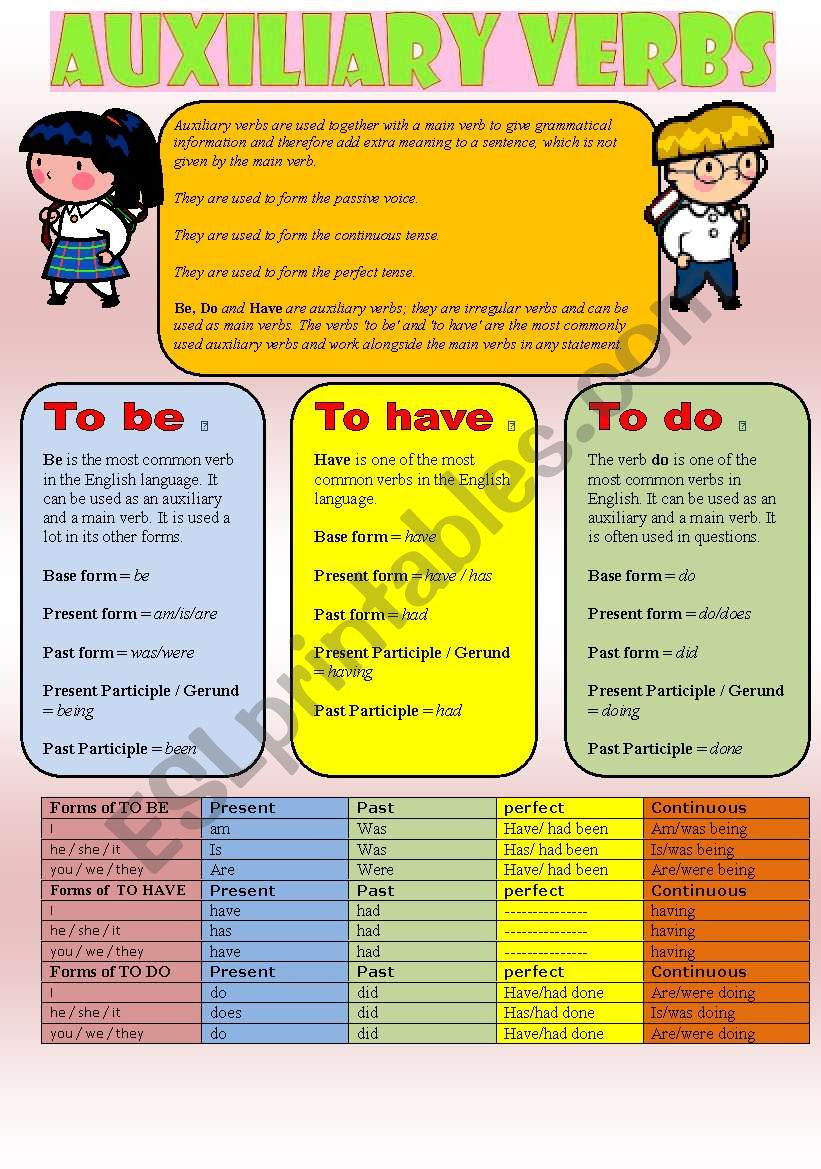
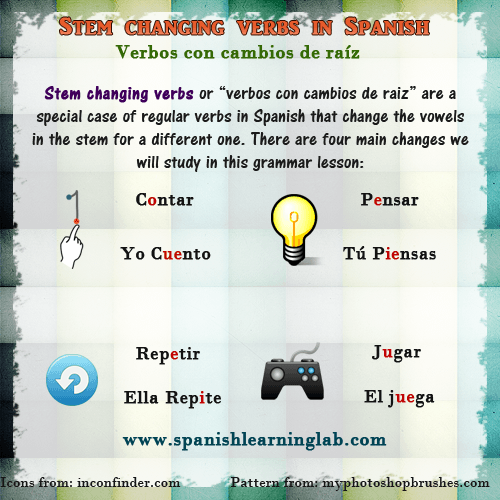
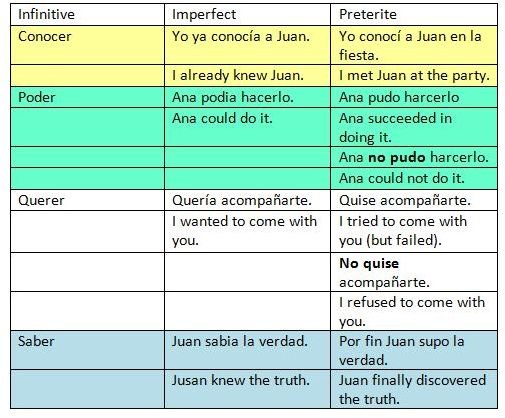

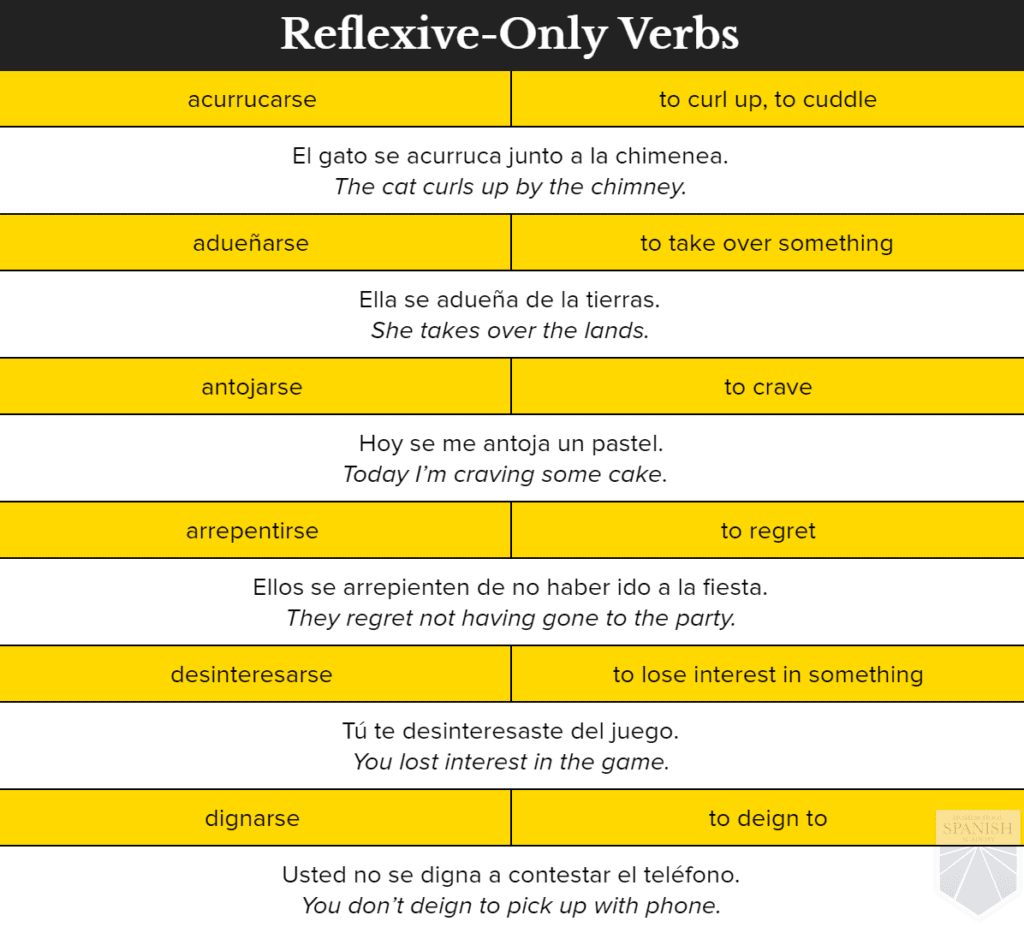






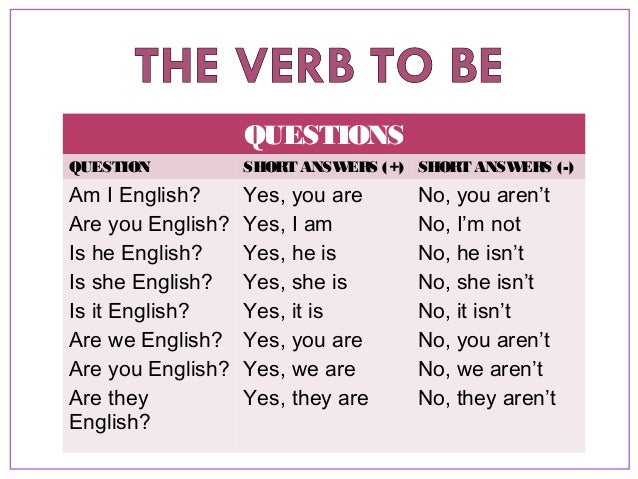













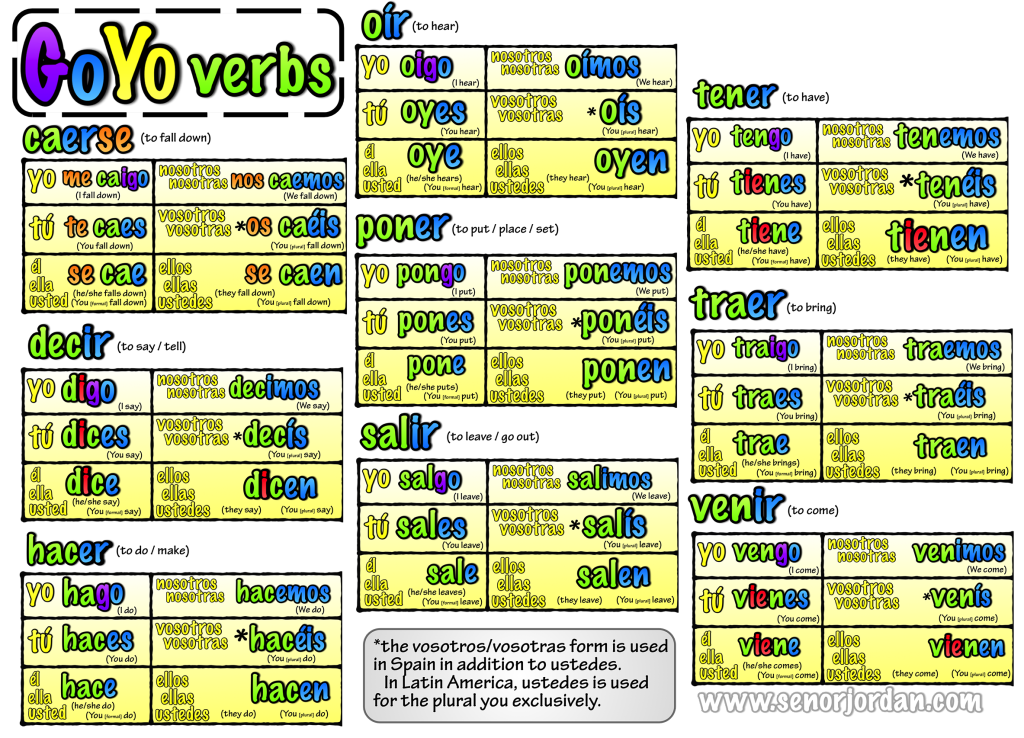
No comments:
Post a Comment
Note: Only a member of this blog may post a comment.